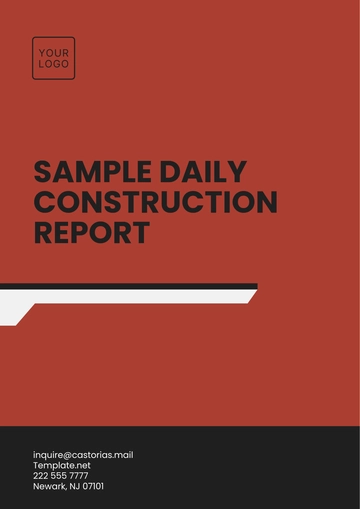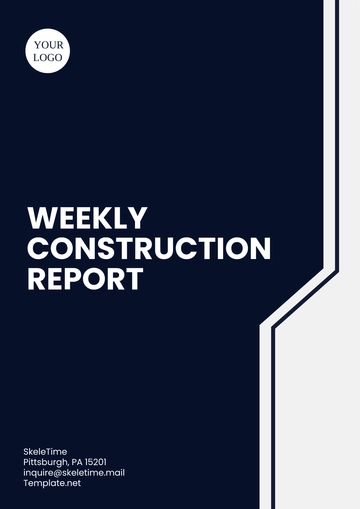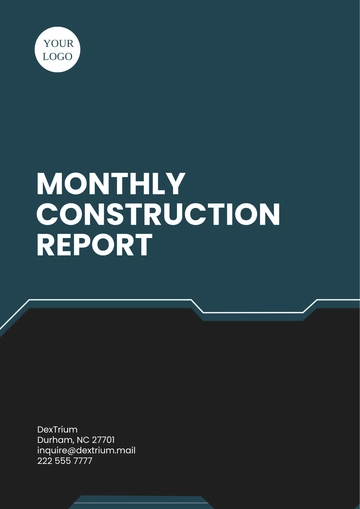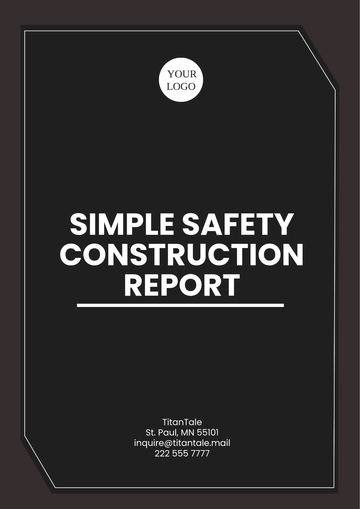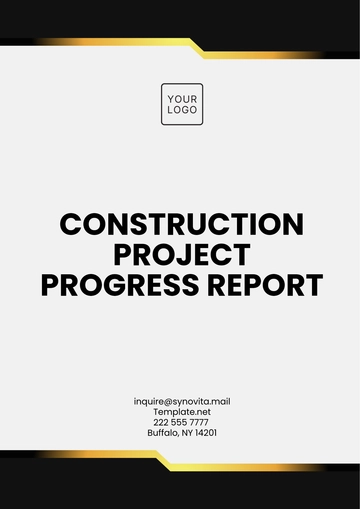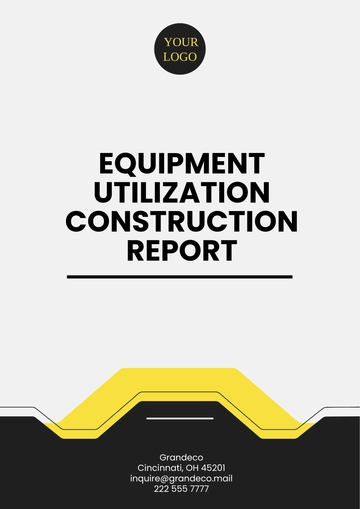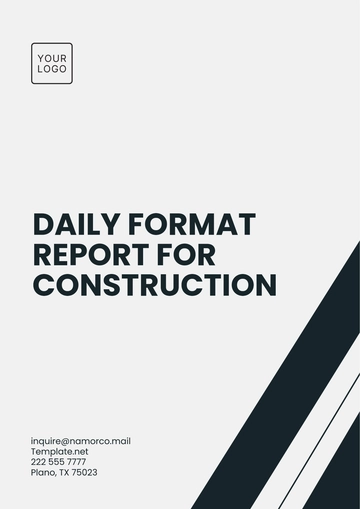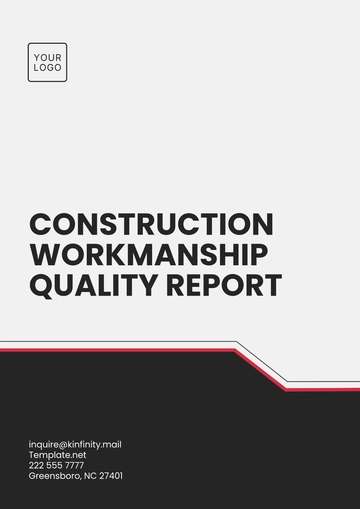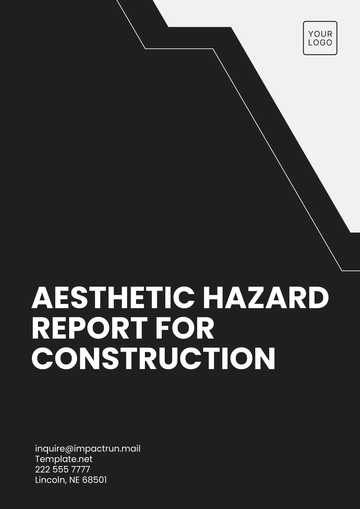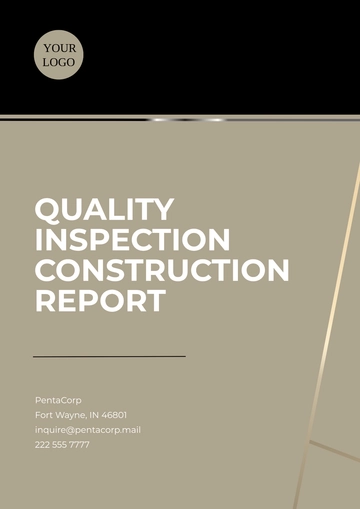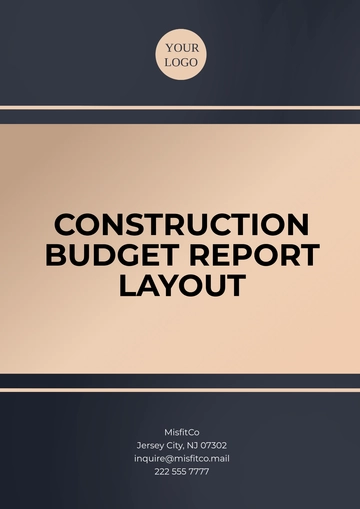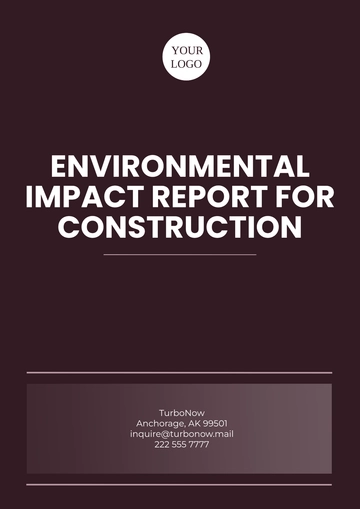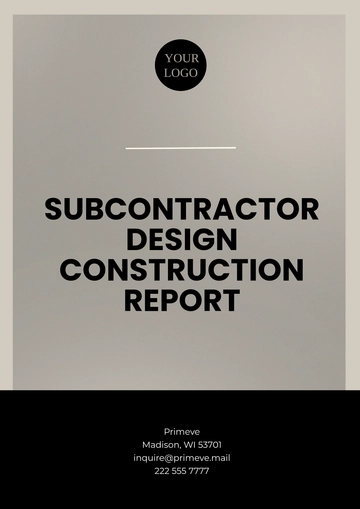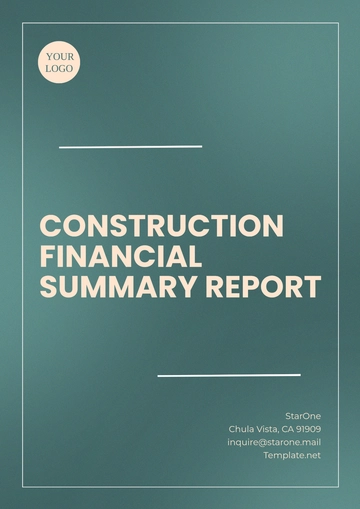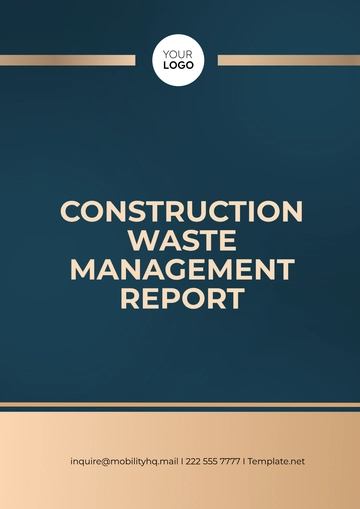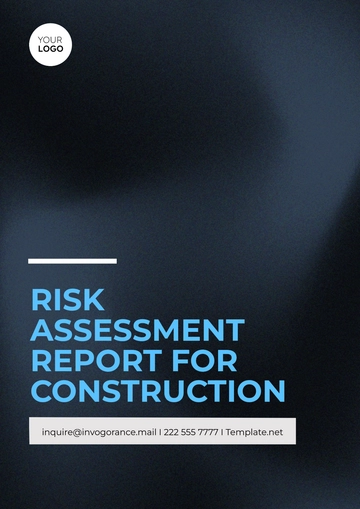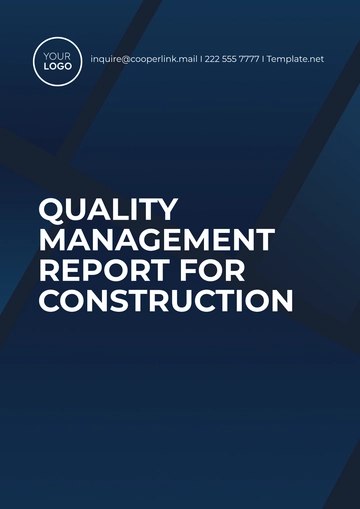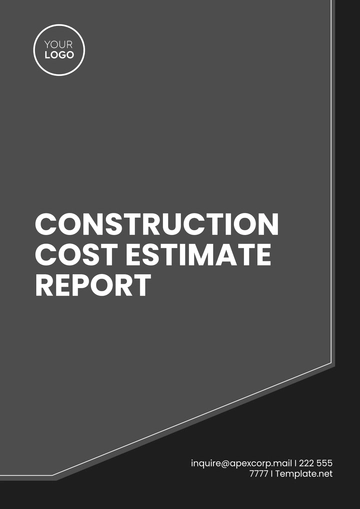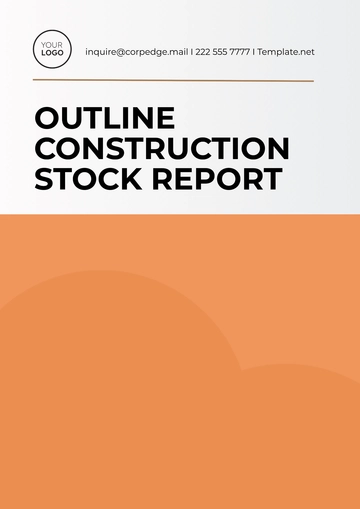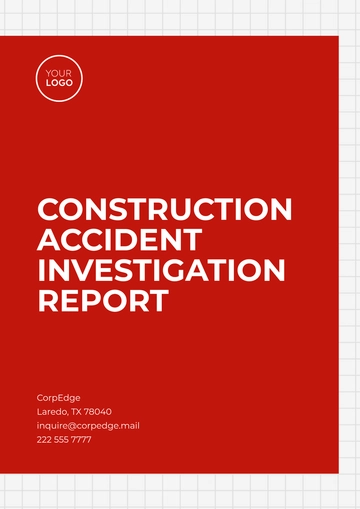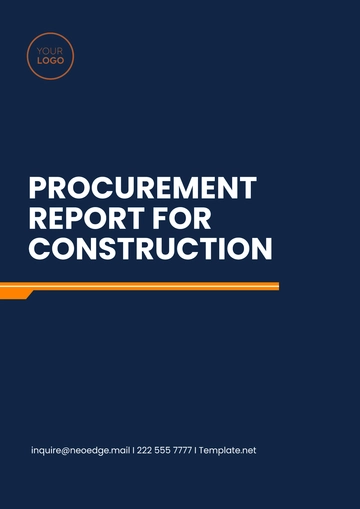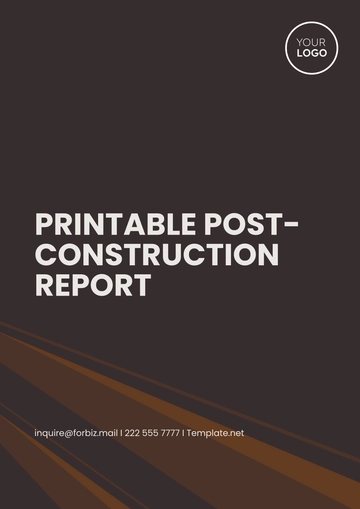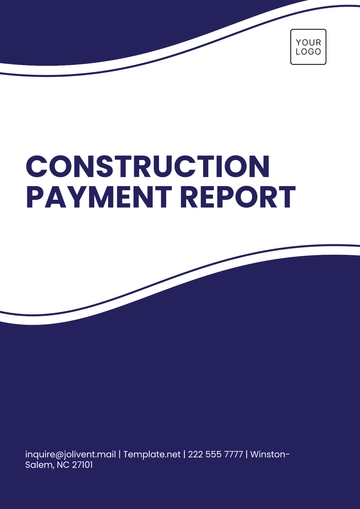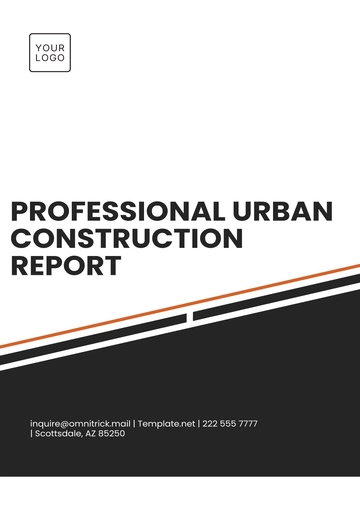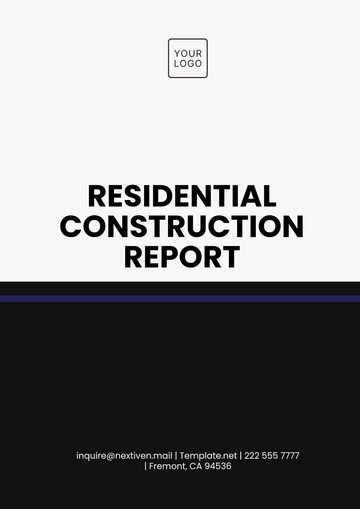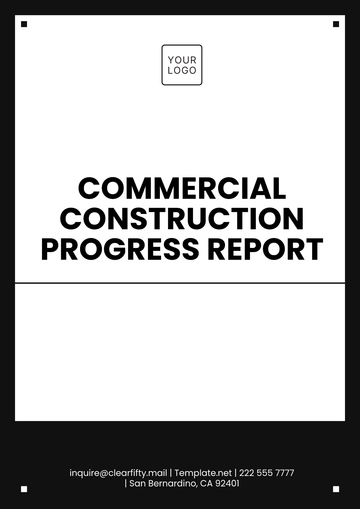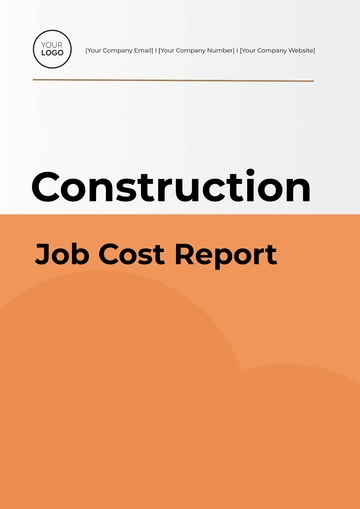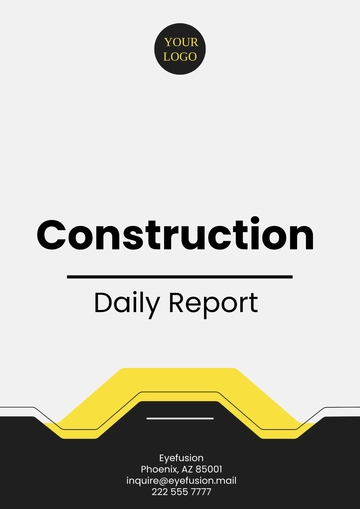Free Construction Job Cost Report
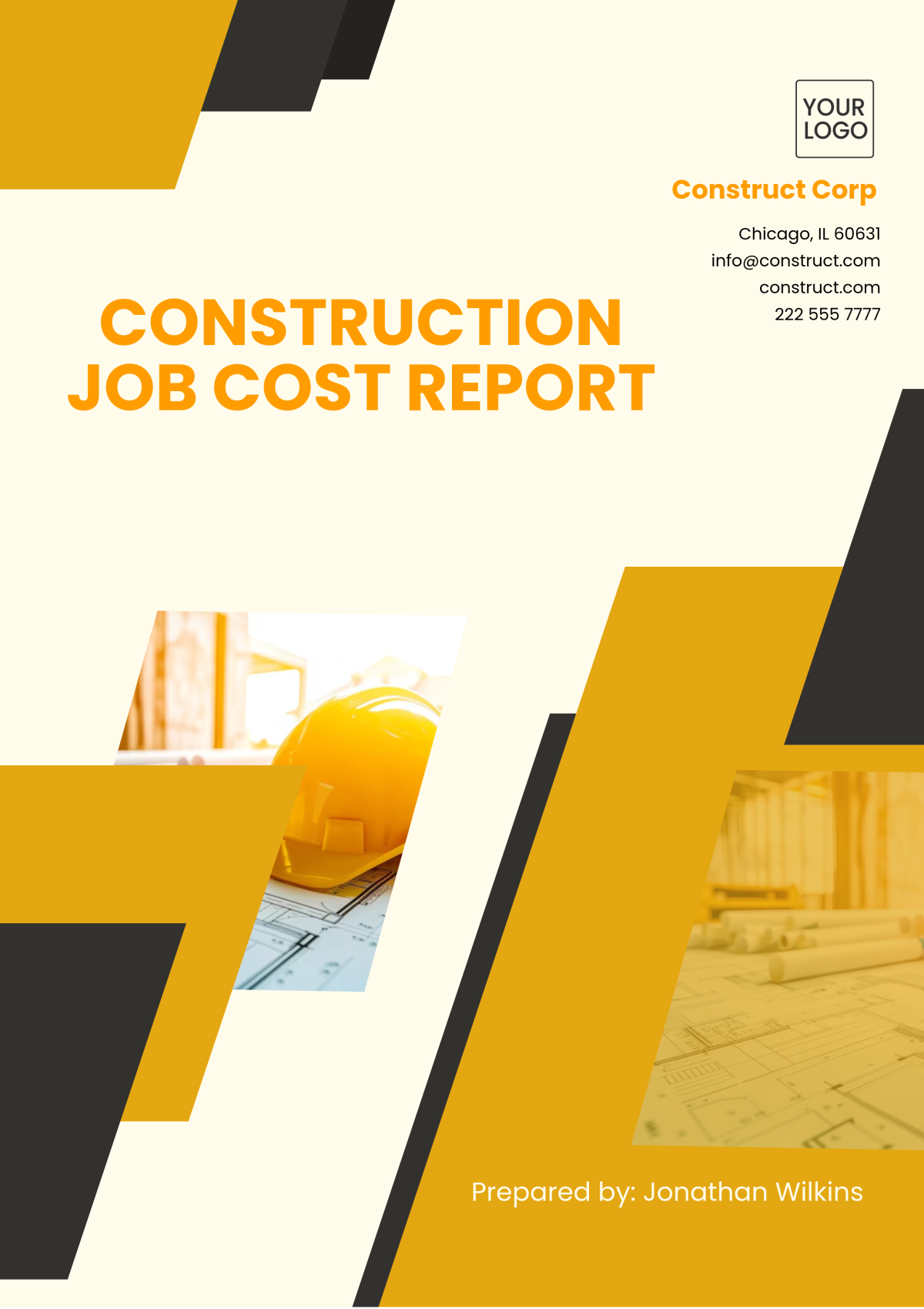
I. Introduction
In the construction industry of 2050, effective cost management is indispensable for project success. The Construction Job Cost Report provides a detailed financial overview of the construction project, offering critical insights into expenses and financial performance. Prepared by [Your Company Name], this report encompasses the financial aspects of Project [ABC], a Residential High-Rise Building located in [Location].
The purpose of this report is to present a comprehensive analysis of all financial expenditures associated with the project. It is designed to help project managers, stakeholders, and clients understand the financial status, make informed decisions, and optimize resource allocation. With advancements in technology, cost tracking and management practices have evolved significantly, leading to more efficient and transparent project execution.
II. Executive Summary
The Construction Job Cost Report for Project [ABC] covers the period from January 2050 to December 2050. This section provides a high-level overview of the project's financial performance and key metrics, summarizing the project’s budget, costs, and overall financial health.
A. Project Overview
Project [ABC] involves the construction of a Residential High-Rise Building at [Location]. The project, with an initial budget of [€5,000,000], is crucial for [Client Name] as it aims to enhance community infrastructure, provide new residential units. As of December 2050, the project is [75%] complete, with costs incurred amounting to [€3,750,000]. The project is tracking well against the budget, showing a favorable cost variance of [€100,000]. The projected final cost is estimated to be [€4,900,000], demonstrating effective financial management and cost control.
B. Financial Summary
The following table summarizes the key financial metrics for Project [ABC], providing a snapshot of the project's budget and cost performance:
Metric | Value |
|---|---|
Original Budget | [€5,000,000] |
Total Costs Incurred | [€3,750,000] |
Projected Final Cost | [€4,900,000] |
Cost Variance | [€100,000] |
Completion Percentage | [75%] |
This financial summary highlights the project's adherence to budgetary constraints and the effectiveness of the cost management strategies employed. The favorable cost variance indicates that the project is on track to be completed within the allocated budget, while the completion percentage reflects the progress made towards achieving project milestones.
III. Cost Breakdown and Analysis
This section provides a detailed breakdown of direct and indirect costs, equipment expenses, subcontractor fees, and contingency budgets. Each category is analyzed to offer a comprehensive view of the financial elements involved in the project.
A. Direct Costs
Direct costs are expenses directly related to construction activities, including labor, materials, and equipment. These costs are essential for the execution of construction tasks and often vary as the project progresses.
1. Labor Costs
Labor costs encompass all wages, overtime pay, benefits, and taxes for personnel directly involved in the construction project. In the construction industry of 2050, the integration of advanced automation and robotics has impacted labor costs, though specialized human input remains crucial for operating high-tech machinery.
Description | Amount |
|---|---|
Total Labor Cost | [€1,200,000] |
Labor Cost per Hour | [€40/hour] |
Total Hours Worked | [30,000 hours] |
Number of Workers | [50 workers] |
The total labor cost reflects the wages paid to a diverse team, including project managers, engineers, equipment operators, and administrative staff. The labor cost per hour indicates the average expense for workforce involvement, while the total hours worked demonstrates the scale of labor invested. Specialized roles, such as robotics operators and AI system specialists, have contributed to higher labor costs due to their technical expertise.
2. Material Costs
Material costs cover the expenditures related to raw materials and supplies essential for construction. In 2050, the adoption of sustainable and high-performance materials has become prevalent, influencing material costs.
Description | Amount |
|---|---|
Total Material Cost | [€1,500,000] |
Main Construction Materials | [€1,200,000] |
Other Materials (Insulation, Electrical) | [€300,000] |
The significant investment in materials such as high-strength eco-concrete and nanotech-based insulation is aimed at meeting contemporary performance standards and sustainability goals. Although these materials tend to be more expensive, their long-term benefits, including improved energy efficiency and durability, justify the investment.
3. Equipment Costs
Equipment costs include expenditures related to machinery, both owned and rented, as well as maintenance and fuel. Technological advancements have led to higher initial costs for state-of-the-art equipment, although they offer enhanced operational efficiency.
Description | Amount |
|---|---|
Total Equipment Costs | [€700,000] |
Owned Equipment Maintenance Costs | [€200,000] |
Rented Equipment Costs | [€500,000] |
The project utilized advanced machinery such as 3D printers and automated construction drones, which have significantly boosted productivity. However, the maintenance costs associated with these sophisticated machines are substantial. Additionally, the rental costs for cutting-edge equipment have contributed to the overall expenditure, reflecting the investment in technology that supports the project’s advanced requirements.
B. Indirect Costs
Indirect costs include overhead expenses that are not directly linked to construction activities but are necessary for the overall project execution. These costs encompass administrative overhead, insurance, and safety expenses.
1. Administrative Overhead
Administrative overhead covers the costs associated with project management, site supervision, permits, and office-related expenses. In 2050, advanced project management tools have streamlined administrative tasks, reducing the need for extensive human resources.
Description | Amount |
|---|---|
Total Administrative Overhead | [€250,000] |
Permit and Compliance Fees | [€50,000] |
Project Management Salaries | [€200,000] |
Administrative costs primarily involve expenses related to obtaining permits and ensuring compliance with regulations, which are crucial for legal and operational purposes. The adoption of AI-driven project management tools has improved efficiency, though some administrative tasks remain labor-intensive.
2. Insurance and Safety
Insurance and safety costs are critical for managing project risks and ensuring worker protection. The stringent safety standards of 2050 necessitate comprehensive insurance coverage and safety measures.
Description | Amount |
|---|---|
Total Insurance and Safety Costs | [€150,000] |
Workers' Compensation Insurance | [€75,000] |
Safety Training and Equipment | [€75,000] |
Despite the advanced safety technologies employed, insurance premiums for construction projects remain high. This is due to the potential risks associated with operating advanced machinery and technology. Investment in safety training and equipment is also necessary to protect workers and minimize the risk of accidents on site.
C. Subcontractor Fees
Subcontractors are engaged to perform specialized tasks such as electrical work, plumbing, and finishing. Their expertise ensures high-quality execution of specific project components.
Description | Amount |
|---|---|
Total Subcontractor Fees | [€400,000] |
Electrical Subcontractor | [€150,000] |
Plumbing Subcontractor | [€100,000] |
Finishing and Landscaping Subcontractor | [€150,000] |
The engagement of subcontractors has allowed for efficient completion of specialized tasks, leveraging their expertise to ensure high standards of workmanship. The fees reflect the premium associated with hiring skilled professionals for critical aspects of the construction process.
D. Contingency
The contingency budget is set aside to address unforeseen expenses and ensure the project remains financially viable in the face of unexpected developments.
Description | Amount |
|---|---|
Contingency Budget | [€500,000] |
Utilized Contingency | [€50,000] |
Remaining Contingency Funds | [€450,000] |
The contingency fund has been partially utilized to cover minor unforeseen costs such as delays due to weather and supply chain issues. The remaining contingency funds provide a safety net for any additional expenses that may arise as the project moves toward completion.
IV. Profitability and Performance Metrics
To assess the financial success and efficiency of the project, several key performance indicators (KPIs) are analyzed. These metrics help evaluate how well the project is performing in terms of cost control and adherence to schedule.
A. Budget Variance
Budget variance measures the difference between the estimated budget and the actual costs incurred. It is a critical indicator of financial performance, highlighting how well the project adheres to its financial plan.
Description | Amount |
|---|---|
Original Budget | [€5,000,000] |
Actual Costs to Date | [€3,750,000] |
Projected Final Cost | [€4,900,000] |
Cost Variance | [€100,000] |
The positive cost variance of [€100,000] indicates that the project is performing better than initially projected. Effective cost management strategies and resource optimization have contributed to this favorable variance. The variance reflects the ability to control and reduce costs below the original budget estimate.
B. Cost Performance Index (CPI)
The Cost Performance Index (CPI) is a crucial metric for evaluating cost efficiency. It compares the value of the work performed to the actual costs incurred, providing insights into how effectively the project is utilizing its budget.
CPI Formula:
CPI = Earned Value (EV) / Actual Cost (AC)
Description | Amount |
|---|---|
Earned Value (EV) | [€4,000,000] |
Actual Cost (AC) | [€3,750,000] |
CPI | [1.07] |
The CPI of [1.07] indicates that for every [€1] spent, the project is generating [€1.07] in value. This metric reflects strong cost control and efficiency, suggesting that the project is delivering more value than the cost incurred.
C. Schedule Performance Index (SPI)
The Schedule Performance Index (SPI) measures the project's adherence to its planned schedule compared to the earned value. It helps in understanding whether the project is ahead or behind schedule.
SPI Formula:
SPI = Earned Value (EV) / Planned Value (PV)
Description | Amount |
|---|---|
Planned Value (PV) | [€4,200,000] |
Earned Value (EV) | [€4,000,000] |
SPI | [0.95] |
An SPI of [0.95] indicates that the project is slightly behind schedule. Although the delay is minor, it highlights the need for timely corrective actions to ensure the project meets its planned completion date. The SPI suggests that while progress is being made, the project team must address any delays to stay aligned with the original timeline.
V. Conclusion
The Construction Job Cost Report for Project [ABC] demonstrates effective financial management and cost control. As of December 2050, the project is [75%] complete, with total costs incurred amounting to [€3,750,000]. The project is under budget with a favorable cost variance of [€100,000] and a positive Cost Performance Index (CPI) of [1.07], indicating efficient use of financial resources. However, the Schedule Performance Index (SPI) of [0.95] reveals a slight delay in project progress, which requires attention to ensure the project remains on schedule.
A. Key Takeaways
Cost Management: The project is performing well in terms of cost management. The positive cost variance and CPI indicate that financial resources are being utilized effectively.
Schedule Management: The slight delay indicated by the SPI suggests a need for schedule adjustments. It is crucial to address any issues causing the delay to meet the planned completion date.
Overall Performance: The project is on track to be completed within budget, and the remaining contingency funds provide a buffer for unforeseen expenses. Continued focus on schedule adherence and efficient resource utilization will be essential for successful project completion.
B. Recommendations
Schedule Adjustment: Review the project schedule to identify causes of delay and implement corrective actions. Consider accelerating certain tasks or reallocating resources to mitigate the impact of the delay.
Cost Monitoring: Continue to monitor costs closely to maintain the favorable cost variance. Ensure that any cost-saving opportunities are explored and applied where feasible.
Risk Management: Enhance risk management practices to anticipate and address potential issues proactively. Ensure that the contingency funds are managed effectively to cover any unexpected costs.
In summary, [Your Company Name] has effectively managed the financial aspects of Project [ABC], maintaining control over direct and indirect costs while ensuring that the project remains within budget. Through strategic planning, efficient use of resources, and technological advancements, the project is expected to be completed successfully with minimal delays. The focus moving forward should be on addressing schedule delays and ensuring that the project remains on track for timely completion.
- 100% Customizable, free editor
- Access 1 Million+ Templates, photo’s & graphics
- Download or share as a template
- Click and replace photos, graphics, text, backgrounds
- Resize, crop, AI write & more
- Access advanced editor
Keep track of expenses with the Construction Job Cost Report Template from Template.net. This editable and customizable report template provides a detailed breakdown of job costs. Customize it in our Ai Editor Tool to fit your project’s specific needs.
You may also like
- Sales Report
- Daily Report
- Project Report
- Business Report
- Weekly Report
- Incident Report
- Annual Report
- Report Layout
- Report Design
- Progress Report
- Marketing Report
- Company Report
- Monthly Report
- Audit Report
- Status Report
- School Report
- Reports Hr
- Management Report
- Project Status Report
- Handover Report
- Health And Safety Report
- Restaurant Report
- Construction Report
- Research Report
- Evaluation Report
- Investigation Report
- Employee Report
- Advertising Report
- Weekly Status Report
- Project Management Report
- Finance Report
- Service Report
- Technical Report
- Meeting Report
- Quarterly Report
- Inspection Report
- Medical Report
- Test Report
- Summary Report
- Inventory Report
- Valuation Report
- Operations Report
- Payroll Report
- Training Report
- Job Report
- Case Report
- Performance Report
- Board Report
- Internal Audit Report
- Student Report
- Monthly Management Report
- Small Business Report
- Accident Report
- Call Center Report
- Activity Report
- IT and Software Report
- Internship Report
- Visit Report
- Product Report
- Book Report
- Property Report
- Recruitment Report
- University Report
- Event Report
- SEO Report
- Conference Report
- Narrative Report
- Nursing Home Report
- Preschool Report
- Call Report
- Customer Report
- Employee Incident Report
- Accomplishment Report
- Social Media Report
- Work From Home Report
- Security Report
- Damage Report
- Quality Report
- Internal Report
- Nurse Report
- Real Estate Report
- Hotel Report
- Equipment Report
- Credit Report
- Field Report
- Non Profit Report
- Maintenance Report
- News Report
- Survey Report
- Executive Report
- Law Firm Report
- Advertising Agency Report
- Interior Design Report
- Travel Agency Report
- Stock Report
- Salon Report
- Bug Report
- Workplace Report
- Action Report
- Investor Report
- Cleaning Services Report
- Consulting Report
- Freelancer Report
- Site Visit Report
- Trip Report
- Classroom Observation Report
- Vehicle Report
- Final Report
- Software Report

